The deliberations of two Chinese ministries are currently causing panic in the solar industry. The Ministries of Commerce and Science and Technology are considering an export ban on several solar technologies, according to a statement by the authorities at the end of January. The export restrictions would affect wafers, black silicon and so-called ingots. And without these materials, solar manufacturing is impossible.
If this plan is actually realized, the export of solar production technologies will only be possible with a permit. Nico Beckert spoke with experts and took a closer look at what this means for the ambitious plans of the green transition in Europe and the West. The verdict is clear: The development of own production capacities in Western countries will definitely be slowed down. However, the planned export restriction could also turn out to be a shot in the foot for China.
In our second analysis, we look at another of China’s exports: Drones – for both civilian and military uses. The products of the Chinese drone manufacturer DJI are turning up on the battlefields in Ukraine, for example. There, they provide Russia with valuable intel. China is also the world’s largest exporter of military drones – and also supplies US partners in crisis areas, as Frank Sieren analyzes.
About four years ago, the Chinese scientist He Jiankui made headlines around the world for creating the first babies with intentionally altered genomes. Today, the twins lead a “normal, peaceful and undisturbed life”, as he now explained in an interview. After serving a prison sentence, he is now working on gene therapies once again. Joern Petring presents the controversial researcher in the Heads section.

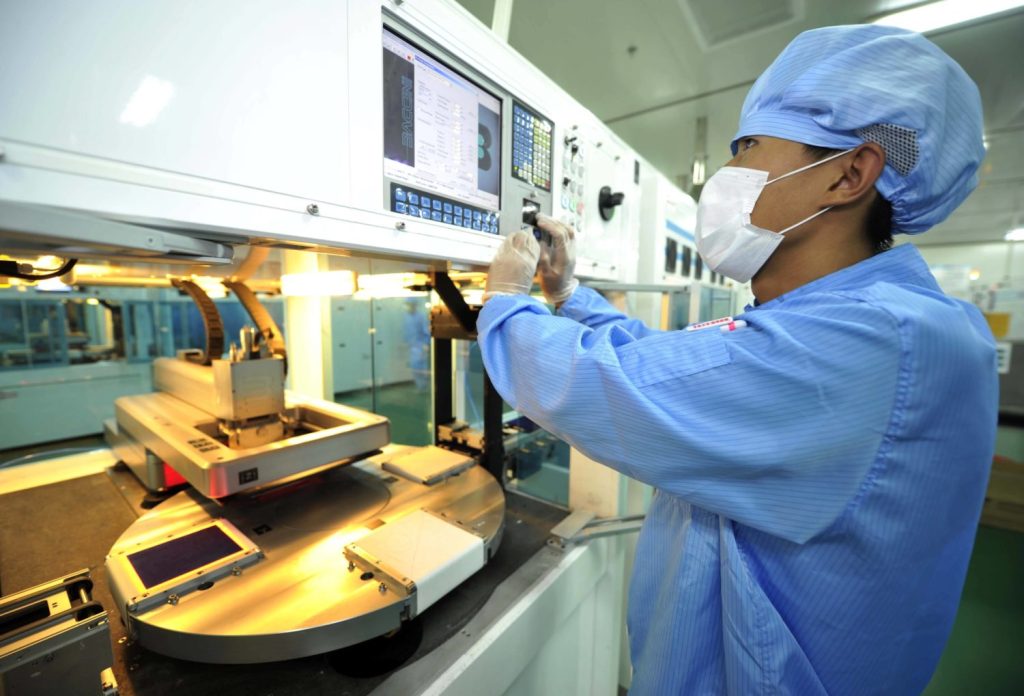
It is a minor announcement that could have a major impact: China wants to place an export ban on important technologies for the production of solar systems. A final decision on this is still pending. A public consultation was open until the end of January. But all China experts consulted are certain that the export restrictions will come. Once a consultation period is over, China rarely reverses major changes to regulations, according to Rebecca Arcesati, an analyst at the German China think tank Merics.
If the plan goes through, the export of solar production technologies will only be possible with the authorities’ approval. “It will not be easy to obtain such permits,” says trade expert Wan-Hsin Liu of the Kiel Institute for the World Economy. The application is said to be a complicated process.
First, a request has to be submitted, which is then reviewed based on, for example, security and industrial policy aspects. “Only then are companies allowed to negotiate the deals with potential buyers,” Liu says. If buyer and seller agree on the deal, a second export license must be applied for “with further documents”.
The export restrictions will “definitely” slow down the development of own production capacities in western countries, says Johannes Bernreuter, an expert on solar supply chains. The know-how still exists, even outside China. But “the production capacities are tiny and not price-competitive”.
Chinese production plants are much cheaper than Western ones – partly due to years of government subsidies for the sector, says the expert, who runs his own consulting agency. Due to the lack of price competitiveness, Western manufacturers of production equipment have withdrawn from the market. The Chinese export ban will therefore hit the Western industry at a critical weak point, Bernreuter says.
The export restrictions would affect:
The People’s Republic is the global leader in the production of these solar precursors. 97 percent of the solar wafers and ingots produced worldwide come from China.
In solar production equipment, too, China is the global market leader. Developing a solar industry in the West without using Chinese equipment is “almost impossible”, accodring to the analysts of the think tank Bloomberg NEF. The barriers to entry for the production of wafers and ingots are very high, they say. “The bleeding-edge knowledge” of photovoltaic manufacturing is in China, say the BNEF analysts.
These export restrictions do not come at a surprising juncture. The USA recently earmarked billions in subsidies for the development of green industries under the Inflation Reduction Act. The EU also wants to catch up in green technologies. And India is taking big steps to build up its own solar industry.
So China sees its dominance in the sector threatened. The solar sector is an important economic sector:
Restricting solar manufacturing tech exports is also politically motivated. “Beijing wants to keep Western countries dependent on China whenever possible and shore up dominance over the tech supply chains it controls,” says Merics analyst Arcesati. The country has built its export control system in recent years “to defend its security, economic, technological and industrial interests”. Accordingly, China’s decision should also be understood as a response to the US Inflation Reduction Act and the EU’s efforts to build its own green supply chains, according to the analyst.
However, it is uncertain whether China will not hurt itself in the long run with these export restrictions. “Threats of controlling solar tech will make others increase efforts to diversify,” speculates energy expert Lauri Myllyvirta of the Centre for Research on Energy and Clean Air on Twitter. A similar case was observed with the Chinese rare-earth embargo against Japan. The neighboring country stepped up its efforts to diversify its supply sources.
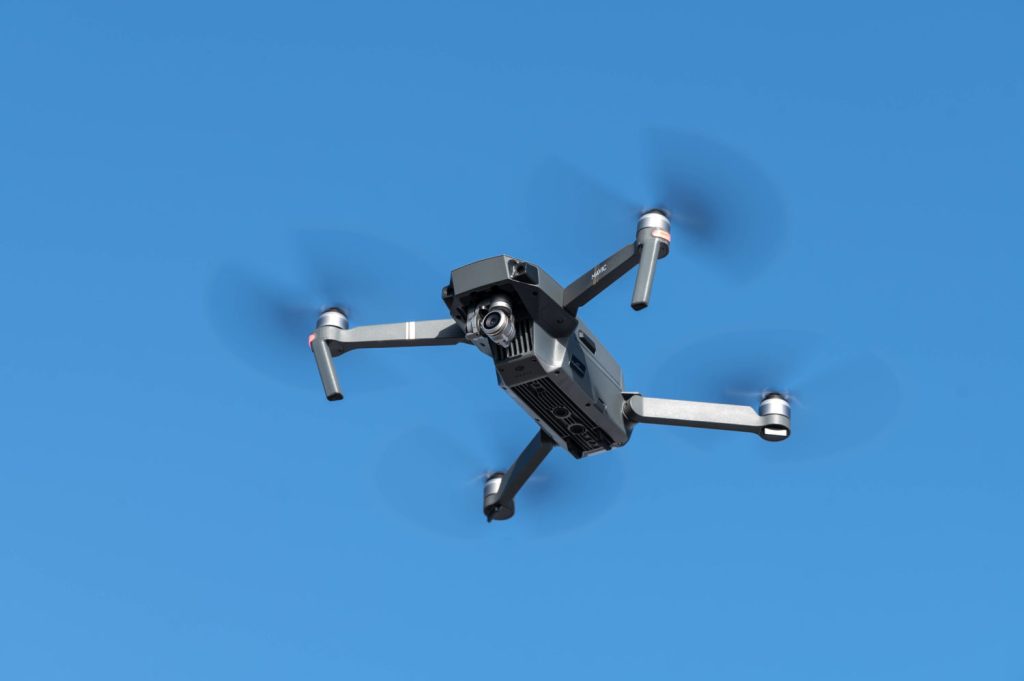
In a recent Wall Street Journal report about secret Chinese support for Russia’s war in Ukraine, a key detail emerges on the final stretch: Shipments of camera drones, which are not designed as military equipment but are still perfectly suited for observing the battlefield. China has long since become the world market leader in drone technology. This applies to both the civilian and military sectors.
In non-military drones, Shenzhen-based DJI dominates global sales with a share of around 70 percent. Back in 2013, at the launch of its first successful product, the Phantom drone, founder Frank Wang prided himself on bringing “military-grade technology” to the market.
The company itself does not sell military drones. However, DJI drones are so reliable that they have “become a product of choice, even for those who want to use a drone inappropriately”, Adam Welsh from DJI told US broadcaster CNBC. Welsh is responsible for policy communications at the company. He calls the capability for reconnaissance purposes “unfortunate”.
These drones are dual-use products, which means they are suited for both civilian and military purposes, according to official assessments. As a result, Washington has blacklisted DJI from doing business with US companies. Above all, they are not allowed to invest in DJI. However, this remains largely without consequences because DJI is not traded on the stock exchange.
This means that the company remains largely unaffected by the US sanctions. It will also be difficult to stop the sale or resale to Russia. After all, customers can order civilian camera drones worldwide in any quantity or simply buy them in shops.
Meanwhile, more signs suggest that China may also be involved in other arms deliveries to Russia. The Russian military is deploying the Shahed-136 kamikaze drone in Ukraine. This lethal aircraft originates from Iran. It is particularly suited for spreading terror among the civilian population by attacking residential buildings.
According to a South China Morning Post report, Russia and Iran are using a motor made by Beijing Micropilot Flight Control Systems, which they are fitting to the Shahed-136. It appears to be a copy of an engine made by the German company Limbach Flugmotoren.
Unlike the DJI camera drones and individual parts – which on their own are harmless – the matter is different with armed military drones. China’s arms manufacturers do not ship them to Ukraine, but to many other crisis regions. Unlike DJI, there are no large quantities involved either. The global market for deadly military drones is small. Therefore, even three-figure sales are enough for China to become one of the world’s largest exporters.
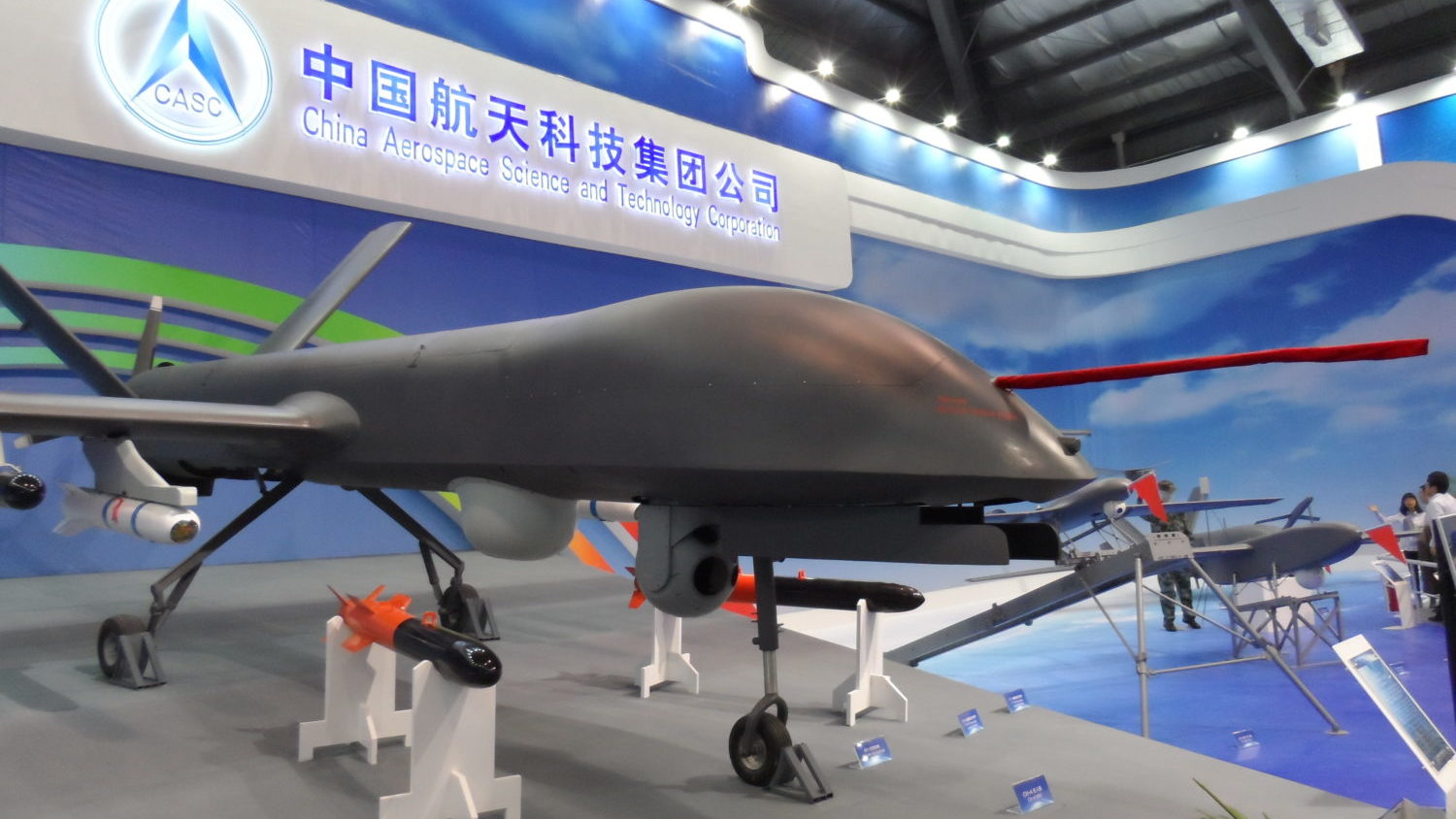
In the past ten years, Chinese manufacturers have sold 298 drones to 17 countries. The USA, the world’s largest arms exporter, has only shipped twelve, followed by France and England. That at least is the count of the Stockholm International Peace Research Institute (SIPRI).
Interestingly, Beijing also exports complete drones to countries that Washington counts as strategic partners, such as Iraq. According to its own information, Iraqi authorities have launched 260 attacks on targets of the terrorist organization IS with Chinese drones since mid-2018.
Among the recipients of the drones is Egypt, with whom the US maintains a “decades-long defense partnership“. So is Saudi Arabia, which Washington calls “a strong partner in security and counterterrorism efforts”. Morocco, Algeria, the United Arab Emirates and Pakistan have also ordered drones from China. And even Serbia, an EU accession candidate, is in on it.
Apparently, the US tolerates the Saudis using Chinese drones to fight a war in Yemen. A war in which, according to the UN’s 2021 estimate, 377,000 people have died over the past ten years. 70 percent of whom are children. Over 15 million people live in extreme poverty because of the war.
China itself has so far only deployed its own drones during military exercises. Most recently surrounding the visit of Nancy Pelosi to Taiwan. For Chinese President Xi Jinping, however, drones are a focus of military build-up, as he emphasized in his speech to the 20th Party Congress last fall. He intends to “speed up the development of unmanned, intelligent combat capabilities” of the Chinese People’s Liberation Army.
From Beijing’s point of view, the big advantage is that the risks for its own soldiers in such military operations are low. Critics, however, stress that unmanned drones will increase the likelihood of military strikes. “We are worried that our country is leading the way to a new type of warfare in which most of the killing will be done by remote control,” writes the Human Rights Working Group of Johns Hopkins University in a petition to the Pentagon.
By now, Chinese drones can also cross intercontinental distances. In November last year, China unveiled the Wing Loong 3, a drone with a 24-meter wingspan that can travel up to 10,000 kilometers and carry up to 16 missiles and bombs. It is also equipped with a defensive system consisting of PL-10E air-to-air missiles that can intercept enemy helicopters mid-flight and other drones. It is manufactured by a subsidiary of the Aviation Industry Corporation of China (AVIC) in Chengdu.
The company is the world’s second-largest arms manufacturer after the US-based Raytheon Technologies Corporation, and ahead of the US company Lockheed Martin and the European arms company Airbus. AVIC has already sold the predecessor models of its drones to eleven countries.
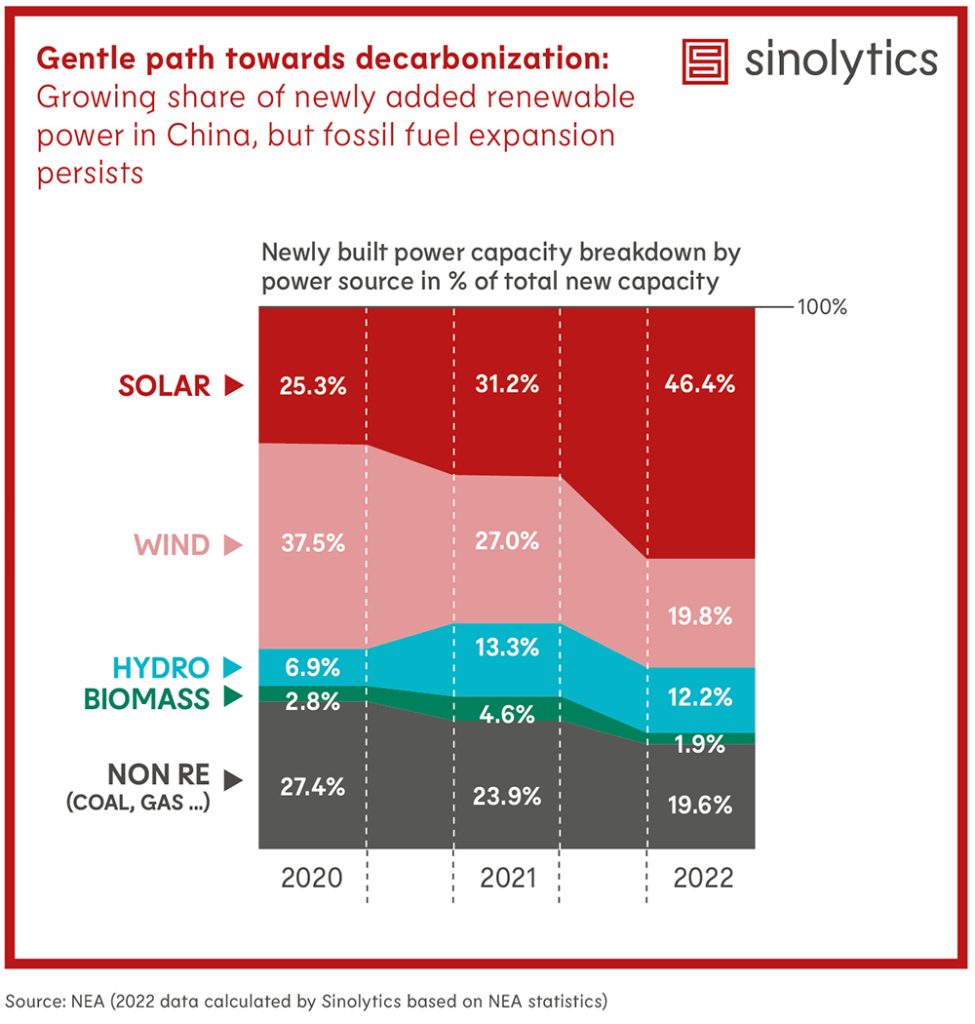
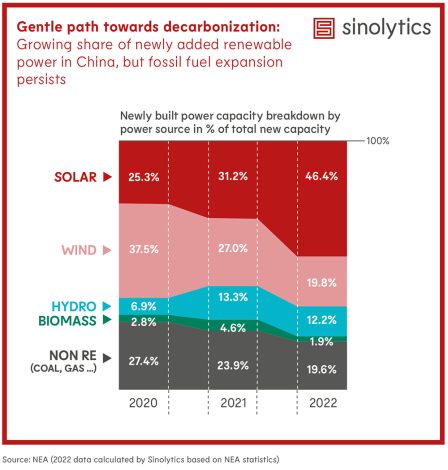
Sinolytics is a European research-based consultancy entirely focused on China. It advises European companies on their strategic orientation and concrete business activities in the People’s Republic.
After the US shot down the alleged Chinese spy balloon off the coast of South Carolina on Saturday, another balloon was spotted over Costa Rica. The Chinese embassy in San José confirmed the origin of the flying object and regretted the incident, reports the foreign ministry of the Central American country.
As before, however, Beijing insisted that the object was a civilian weather balloon that had strayed from its planned course. The leadership continues to call the downing of the first-sighted balloon by the US military a “clear overreaction” that strained relations between the two countries, as Foreign Office spokeswoman Mao Ning reiterated in a press conference on Tuesday. Meanwhile, an older state media TV report has surfaced in which the Chinese air force portrayed the downing of another nation’s spy balloon over its own territory as a patriotic act.
Meanwhile, debris from the downed balloon is being recovered from a depth of about 15 meters off the coast of South Carolina. The balloon measured approximately 61 meters in height and probably weighed as much as a small commercial plane, said the commander of the US Northern Command, Glen VanHerck. No information has yet been released about any stored data that could provide information about the background of the balloon mission.
However, information surfaced that at least three Chinese spy balloons had already entered US airspace during Donald Trump’s term in office. A similar incident also occurred at the beginning of Joe Biden’s term in office. However, the US was only able to determine the Chinese origin of the balloons after they had left US airspace, VanHerck explained. Improvements made to counterintelligence under US President Joe Biden now allowed to identify the flying objects in time, he said.
Meanwhile, Wolfgang Ischinger, President of the Foundation Council of the Munich Security Conference and former German Ambassador to Washington, urges both major powers to be more level-headed. Satellite reconnaissance and many other means of gathering information have been used by many nations for years, especially China and the USA. Ischinger expects that the canceled China visit by US Secretary of State Antony Blinken will be rescheduled soon. fpe
The EU wants to counter Chinese and Russian disinformation campaigns more effectively with a new platform. A newly created “Information Sharing and Analysis Center” within the Diplomatic Service of the European Union (EEAS) will track disinformation from outside the EU and also coordinate with the 27 member states and civil society actors, EU chief diplomat Josep Borrell announced on Tuesday at an event on countering disinformation in Brussels. “Authoritarian regimes try to create misinformation and manipulate it,” Borrell warned.
The idea is to create a decentralized platform for sharing information in real-time with countries, cybersecurity authorities and NGOs. In this way, already existing disinformation campaigns should be better investigated and understood. It should also be able to respond more quickly to emerging narratives. Further details on the size and staffing of the centre were not initially disclosed. Beyond the platform, Borrell also announced plans to add disinformation experts to EU delegations abroad.
Over the past year, the People’s Republic has mostly engaged in information manipulation in connection with the Ukraine war, according to a first report on the issue by the EU’s existing disinformation unit, the Stratcom department of the EEAS. The circulated narratives had mainly focused on supporting the Russian invasion, it said. “A majority of Ukraine-related reports in international channels of Chinese state-controlled media have been based on official Russian sources,” the Stratcom report explains.
For the report, the Stratcom unit studied around 100 cases of information manipulation in greater detail. The report shows that the disinformation is predominantly image- and video-based, multilingual and spread via a dense network of actors. On Twitter, the channels of diplomatic representatives from China and Russia are particularly involved.
Apart from the war narrative, China is also very focused on its own reputation. “China’s parallel aim is to suppress competing, and potentially critical stories about itself, also by using intimidation and harassment”, the report says. For example, it would attempt to influence reports on human rights issues. China is also particularly active in the Western Balkans. ari
The chairwoman of the Human Rights Committee in the German Bundestag, Renata Alt, has condemned the boarding school system in Tibet “in the strongest possible terms”. The liberal FDP politician accuses the Chinese government of systematically eradicating Tibetan culture. “China is trying to systematically eradicate the Tibetan minority through inhumane measures such as forced assimilation and re-education of up to one million children. China’s boarding school system is another gross human rights violation committed by the Communist Party against the Tibetan people.”
The background is the accusation by special rapporteurs of the United Nations that the Chinese government wants to marginalize the Tibetan language and culture. To this end, local Tibetan schools are being closed to force children to attend boarding schools, where they live separated from their parents for most of the year and only speak Mandarin.
Especially younger children not only forget their language but also lose connection to their own traditions and roots in the long run. “The children are only exposed to Chinese language, history and propaganda in schools. They are completely mentally sinicized. The impact on Tibetan culture is catastrophic,” the president of the Tibetan government-in-exile, Penpa Tsering, explained last week in an exclusive interview with China.Table. More than 800,000 students are currently affected. Only in a few places are local schools still open at all.
“We welcome the clear statement by the UN Special Rapporteurs on the forced boarding schools in Tibet, which is backed by a ruthless assimilation policy against Tibetans,” said ICT Executive Director Kai Mueller. The international community, UN bodies, governments and parliaments should strongly and publicly urge the Chinese government to stop its so-called sinicization and assimilation policies against Tibetans, he added. “An entire generation of Tibetans is thus threatened with the loss of their cultural identity.” grz
The government of Guinea has announced plans to develop the Simandou iron ore mine. The mountain range in southern Guinea is believed to contain the largest untapped deposit of high-grade iron ore. The mine could thus become the largest on the continent. A port and rail infrastructure are also planned. Commodity companies Rio Tinto and China Baowu Steel are involved in the project, as is the Winning Simandou consortium. Previous attempts to exploit the iron ore deposit had failed due to ownership and infrastructure disputes as well as political upheaval in Guinea. ajs
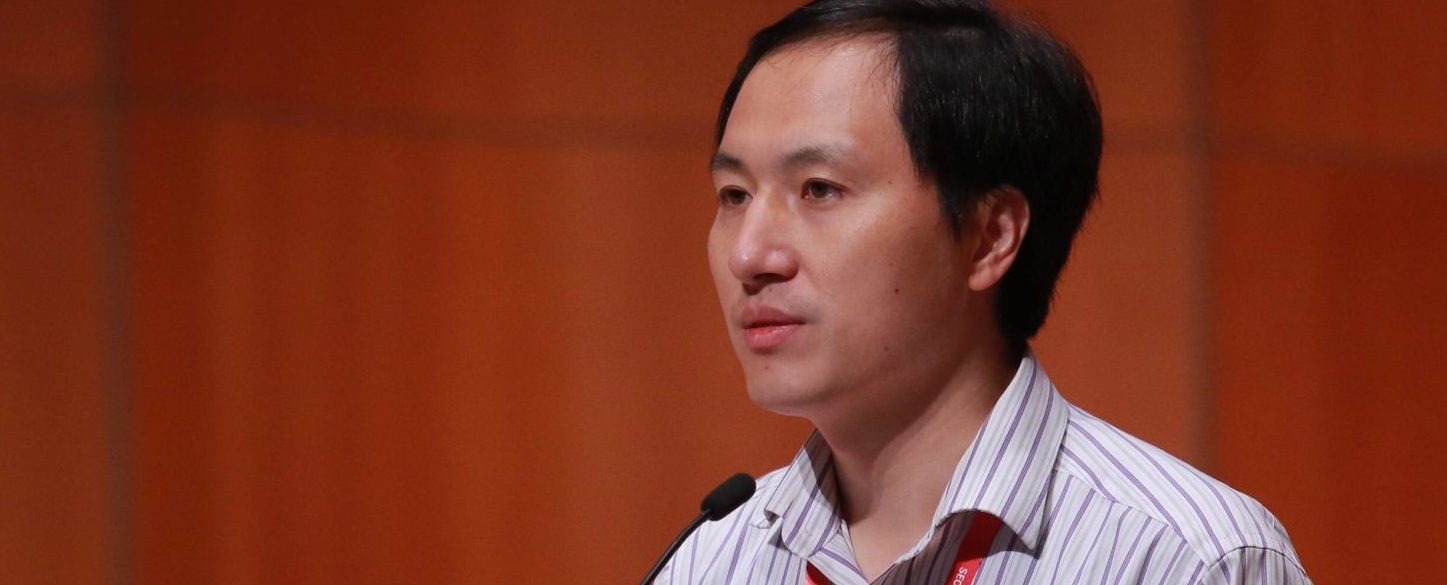
For three years, Chinese scientist He Jiankui was in prison for creating the world’s first genetically engineered babies. After his release in April 2022, he has now returned in a remarkable interview with the Hong Kong newspaper South China Morning Post. Some four years after their birth, he explained, the three children were doing well. They were leading “a normal, peaceful and undisturbed life”.
In November 2018, He had announced the birth of twin girls “Lulu” and “Nana”. Also, the researcher had announced at the time that another woman was pregnant with a genetically engineered child. This child was also born later. The researcher stated that he had manipulated the children’s genetic material with the help of the CRISPR/Cas9 genetic scissors in such a way that the children were protected against HIV infections. This sparked widespread outrage among experts and the public.
When asked if he was worried about the children’s future, He replied that he shares the same expectations and concerns “that every father would have for the future of his children,” according to the South China Morning Post. He and his team have promised to continue monitoring the children’s health. Once they are 18, they can decide for themselves whether they want to continue to be checked by him, he said.
He explained that it was very difficult to get health insurance for the children. In addition to basic public health care, they tried to get additional insurance. But no insurance company wanted to take the children. He now plans to set up a charity foundation to raise money.
Since He performed the genetic modification, data has shown that changes to the genes that protect against HIV increase the risk of dying from other diseases. His modification also only protects against some HIV variants, if at all. The virus is also successfully treated in China with drugs that prevent the outbreak of AIDS. So he is exposing the girls to additional risks with no apparent benefit. Moreover, he did not provide the parents with adequate information.
But He Jiankui does not reflect on possible mistakes in the interview. Instead, he again seems to be dreaming of major scientific breakthroughs. He is already running a new laboratory in Beijing, for example, where he is researching “affordable gene therapies for rare genetic diseases.” His long-term vision, he says, is “that each of us should be free from inherited diseases.”
He Jiankui was born in 1984 and first studied in China from 2002 to 2006. In 2007, he moved to Rice University in the United States, where he received his Ph.D. from the Department of Physics and Astronomy in 2010. After earning his Ph.D., he took up a postdoctoral position at Stanford University.
Under the Chinese government’s Thousand Talents Program, he returned to China in 2012 and opened a laboratory at the Southern University of Science and Technology in Shenzhen. He also founded several biotechnology companies.
Before He became famous around the world overnight in 2018, China’s state media reported on the exceptional scientific talent with admiration. But the scandal surrounding genetically engineered babies had cost him his reputation. Not only did He end up in jail, his work was also labeled extremely abhorrent by the Chinese authorities.
Following his publication, researchers around the world increasingly questioned his research. Experts concluded that He Jiankui’s actions violated numerous ethical and scientific standards.
But now He seems to have been rehabilitated. There is no other explanation for the fact that he is once again allowed to run a laboratory in the capital and give interviews. His research has opened the door to attempts to produce designer babies that bring an advantage in intelligence, academic achievement or good looks. Joern Petring
Alena Skrancova has been Director Of Logistics at Bosch Powertrain Solutions Asia Pacific since January. Educated in Freiburg and Pilsen, the trained logistics manager previously worked for Bosch in Romania. Her new workplace is in Shanghai.
Nong Rong, formerly Chinese ambassador to Pakistan, has been appointed deputy foreign minister, China’s State Council announced Tuesday. Prior to his ambassadorship, the now 56-year-old served as head of the Regional Commission for Ethnic and Religious Affairs in the province of Guangxi.
Is something changing in your organization? Why not let us know at heads@table.media!

The streaming platform Disney Plus has removed an episode of the US animated series The Simpsons from its Hong Kong service. The reason: In one episode of the last season, China is presented as a country of “bitcoin mines and forced labor camps”. Under the National Security Law, which Beijing passed in 2020 in response to mass protests in the Special Administrative Region, such statements are considered subversive.
The deliberations of two Chinese ministries are currently causing panic in the solar industry. The Ministries of Commerce and Science and Technology are considering an export ban on several solar technologies, according to a statement by the authorities at the end of January. The export restrictions would affect wafers, black silicon and so-called ingots. And without these materials, solar manufacturing is impossible.
If this plan is actually realized, the export of solar production technologies will only be possible with a permit. Nico Beckert spoke with experts and took a closer look at what this means for the ambitious plans of the green transition in Europe and the West. The verdict is clear: The development of own production capacities in Western countries will definitely be slowed down. However, the planned export restriction could also turn out to be a shot in the foot for China.
In our second analysis, we look at another of China’s exports: Drones – for both civilian and military uses. The products of the Chinese drone manufacturer DJI are turning up on the battlefields in Ukraine, for example. There, they provide Russia with valuable intel. China is also the world’s largest exporter of military drones – and also supplies US partners in crisis areas, as Frank Sieren analyzes.
About four years ago, the Chinese scientist He Jiankui made headlines around the world for creating the first babies with intentionally altered genomes. Today, the twins lead a “normal, peaceful and undisturbed life”, as he now explained in an interview. After serving a prison sentence, he is now working on gene therapies once again. Joern Petring presents the controversial researcher in the Heads section.


It is a minor announcement that could have a major impact: China wants to place an export ban on important technologies for the production of solar systems. A final decision on this is still pending. A public consultation was open until the end of January. But all China experts consulted are certain that the export restrictions will come. Once a consultation period is over, China rarely reverses major changes to regulations, according to Rebecca Arcesati, an analyst at the German China think tank Merics.
If the plan goes through, the export of solar production technologies will only be possible with the authorities’ approval. “It will not be easy to obtain such permits,” says trade expert Wan-Hsin Liu of the Kiel Institute for the World Economy. The application is said to be a complicated process.
First, a request has to be submitted, which is then reviewed based on, for example, security and industrial policy aspects. “Only then are companies allowed to negotiate the deals with potential buyers,” Liu says. If buyer and seller agree on the deal, a second export license must be applied for “with further documents”.
The export restrictions will “definitely” slow down the development of own production capacities in western countries, says Johannes Bernreuter, an expert on solar supply chains. The know-how still exists, even outside China. But “the production capacities are tiny and not price-competitive”.
Chinese production plants are much cheaper than Western ones – partly due to years of government subsidies for the sector, says the expert, who runs his own consulting agency. Due to the lack of price competitiveness, Western manufacturers of production equipment have withdrawn from the market. The Chinese export ban will therefore hit the Western industry at a critical weak point, Bernreuter says.
The export restrictions would affect:
The People’s Republic is the global leader in the production of these solar precursors. 97 percent of the solar wafers and ingots produced worldwide come from China.
In solar production equipment, too, China is the global market leader. Developing a solar industry in the West without using Chinese equipment is “almost impossible”, accodring to the analysts of the think tank Bloomberg NEF. The barriers to entry for the production of wafers and ingots are very high, they say. “The bleeding-edge knowledge” of photovoltaic manufacturing is in China, say the BNEF analysts.
These export restrictions do not come at a surprising juncture. The USA recently earmarked billions in subsidies for the development of green industries under the Inflation Reduction Act. The EU also wants to catch up in green technologies. And India is taking big steps to build up its own solar industry.
So China sees its dominance in the sector threatened. The solar sector is an important economic sector:
Restricting solar manufacturing tech exports is also politically motivated. “Beijing wants to keep Western countries dependent on China whenever possible and shore up dominance over the tech supply chains it controls,” says Merics analyst Arcesati. The country has built its export control system in recent years “to defend its security, economic, technological and industrial interests”. Accordingly, China’s decision should also be understood as a response to the US Inflation Reduction Act and the EU’s efforts to build its own green supply chains, according to the analyst.
However, it is uncertain whether China will not hurt itself in the long run with these export restrictions. “Threats of controlling solar tech will make others increase efforts to diversify,” speculates energy expert Lauri Myllyvirta of the Centre for Research on Energy and Clean Air on Twitter. A similar case was observed with the Chinese rare-earth embargo against Japan. The neighboring country stepped up its efforts to diversify its supply sources.

In a recent Wall Street Journal report about secret Chinese support for Russia’s war in Ukraine, a key detail emerges on the final stretch: Shipments of camera drones, which are not designed as military equipment but are still perfectly suited for observing the battlefield. China has long since become the world market leader in drone technology. This applies to both the civilian and military sectors.
In non-military drones, Shenzhen-based DJI dominates global sales with a share of around 70 percent. Back in 2013, at the launch of its first successful product, the Phantom drone, founder Frank Wang prided himself on bringing “military-grade technology” to the market.
The company itself does not sell military drones. However, DJI drones are so reliable that they have “become a product of choice, even for those who want to use a drone inappropriately”, Adam Welsh from DJI told US broadcaster CNBC. Welsh is responsible for policy communications at the company. He calls the capability for reconnaissance purposes “unfortunate”.
These drones are dual-use products, which means they are suited for both civilian and military purposes, according to official assessments. As a result, Washington has blacklisted DJI from doing business with US companies. Above all, they are not allowed to invest in DJI. However, this remains largely without consequences because DJI is not traded on the stock exchange.
This means that the company remains largely unaffected by the US sanctions. It will also be difficult to stop the sale or resale to Russia. After all, customers can order civilian camera drones worldwide in any quantity or simply buy them in shops.
Meanwhile, more signs suggest that China may also be involved in other arms deliveries to Russia. The Russian military is deploying the Shahed-136 kamikaze drone in Ukraine. This lethal aircraft originates from Iran. It is particularly suited for spreading terror among the civilian population by attacking residential buildings.
According to a South China Morning Post report, Russia and Iran are using a motor made by Beijing Micropilot Flight Control Systems, which they are fitting to the Shahed-136. It appears to be a copy of an engine made by the German company Limbach Flugmotoren.
Unlike the DJI camera drones and individual parts – which on their own are harmless – the matter is different with armed military drones. China’s arms manufacturers do not ship them to Ukraine, but to many other crisis regions. Unlike DJI, there are no large quantities involved either. The global market for deadly military drones is small. Therefore, even three-figure sales are enough for China to become one of the world’s largest exporters.

In the past ten years, Chinese manufacturers have sold 298 drones to 17 countries. The USA, the world’s largest arms exporter, has only shipped twelve, followed by France and England. That at least is the count of the Stockholm International Peace Research Institute (SIPRI).
Interestingly, Beijing also exports complete drones to countries that Washington counts as strategic partners, such as Iraq. According to its own information, Iraqi authorities have launched 260 attacks on targets of the terrorist organization IS with Chinese drones since mid-2018.
Among the recipients of the drones is Egypt, with whom the US maintains a “decades-long defense partnership“. So is Saudi Arabia, which Washington calls “a strong partner in security and counterterrorism efforts”. Morocco, Algeria, the United Arab Emirates and Pakistan have also ordered drones from China. And even Serbia, an EU accession candidate, is in on it.
Apparently, the US tolerates the Saudis using Chinese drones to fight a war in Yemen. A war in which, according to the UN’s 2021 estimate, 377,000 people have died over the past ten years. 70 percent of whom are children. Over 15 million people live in extreme poverty because of the war.
China itself has so far only deployed its own drones during military exercises. Most recently surrounding the visit of Nancy Pelosi to Taiwan. For Chinese President Xi Jinping, however, drones are a focus of military build-up, as he emphasized in his speech to the 20th Party Congress last fall. He intends to “speed up the development of unmanned, intelligent combat capabilities” of the Chinese People’s Liberation Army.
From Beijing’s point of view, the big advantage is that the risks for its own soldiers in such military operations are low. Critics, however, stress that unmanned drones will increase the likelihood of military strikes. “We are worried that our country is leading the way to a new type of warfare in which most of the killing will be done by remote control,” writes the Human Rights Working Group of Johns Hopkins University in a petition to the Pentagon.
By now, Chinese drones can also cross intercontinental distances. In November last year, China unveiled the Wing Loong 3, a drone with a 24-meter wingspan that can travel up to 10,000 kilometers and carry up to 16 missiles and bombs. It is also equipped with a defensive system consisting of PL-10E air-to-air missiles that can intercept enemy helicopters mid-flight and other drones. It is manufactured by a subsidiary of the Aviation Industry Corporation of China (AVIC) in Chengdu.
The company is the world’s second-largest arms manufacturer after the US-based Raytheon Technologies Corporation, and ahead of the US company Lockheed Martin and the European arms company Airbus. AVIC has already sold the predecessor models of its drones to eleven countries.


Sinolytics is a European research-based consultancy entirely focused on China. It advises European companies on their strategic orientation and concrete business activities in the People’s Republic.
After the US shot down the alleged Chinese spy balloon off the coast of South Carolina on Saturday, another balloon was spotted over Costa Rica. The Chinese embassy in San José confirmed the origin of the flying object and regretted the incident, reports the foreign ministry of the Central American country.
As before, however, Beijing insisted that the object was a civilian weather balloon that had strayed from its planned course. The leadership continues to call the downing of the first-sighted balloon by the US military a “clear overreaction” that strained relations between the two countries, as Foreign Office spokeswoman Mao Ning reiterated in a press conference on Tuesday. Meanwhile, an older state media TV report has surfaced in which the Chinese air force portrayed the downing of another nation’s spy balloon over its own territory as a patriotic act.
Meanwhile, debris from the downed balloon is being recovered from a depth of about 15 meters off the coast of South Carolina. The balloon measured approximately 61 meters in height and probably weighed as much as a small commercial plane, said the commander of the US Northern Command, Glen VanHerck. No information has yet been released about any stored data that could provide information about the background of the balloon mission.
However, information surfaced that at least three Chinese spy balloons had already entered US airspace during Donald Trump’s term in office. A similar incident also occurred at the beginning of Joe Biden’s term in office. However, the US was only able to determine the Chinese origin of the balloons after they had left US airspace, VanHerck explained. Improvements made to counterintelligence under US President Joe Biden now allowed to identify the flying objects in time, he said.
Meanwhile, Wolfgang Ischinger, President of the Foundation Council of the Munich Security Conference and former German Ambassador to Washington, urges both major powers to be more level-headed. Satellite reconnaissance and many other means of gathering information have been used by many nations for years, especially China and the USA. Ischinger expects that the canceled China visit by US Secretary of State Antony Blinken will be rescheduled soon. fpe
The EU wants to counter Chinese and Russian disinformation campaigns more effectively with a new platform. A newly created “Information Sharing and Analysis Center” within the Diplomatic Service of the European Union (EEAS) will track disinformation from outside the EU and also coordinate with the 27 member states and civil society actors, EU chief diplomat Josep Borrell announced on Tuesday at an event on countering disinformation in Brussels. “Authoritarian regimes try to create misinformation and manipulate it,” Borrell warned.
The idea is to create a decentralized platform for sharing information in real-time with countries, cybersecurity authorities and NGOs. In this way, already existing disinformation campaigns should be better investigated and understood. It should also be able to respond more quickly to emerging narratives. Further details on the size and staffing of the centre were not initially disclosed. Beyond the platform, Borrell also announced plans to add disinformation experts to EU delegations abroad.
Over the past year, the People’s Republic has mostly engaged in information manipulation in connection with the Ukraine war, according to a first report on the issue by the EU’s existing disinformation unit, the Stratcom department of the EEAS. The circulated narratives had mainly focused on supporting the Russian invasion, it said. “A majority of Ukraine-related reports in international channels of Chinese state-controlled media have been based on official Russian sources,” the Stratcom report explains.
For the report, the Stratcom unit studied around 100 cases of information manipulation in greater detail. The report shows that the disinformation is predominantly image- and video-based, multilingual and spread via a dense network of actors. On Twitter, the channels of diplomatic representatives from China and Russia are particularly involved.
Apart from the war narrative, China is also very focused on its own reputation. “China’s parallel aim is to suppress competing, and potentially critical stories about itself, also by using intimidation and harassment”, the report says. For example, it would attempt to influence reports on human rights issues. China is also particularly active in the Western Balkans. ari
The chairwoman of the Human Rights Committee in the German Bundestag, Renata Alt, has condemned the boarding school system in Tibet “in the strongest possible terms”. The liberal FDP politician accuses the Chinese government of systematically eradicating Tibetan culture. “China is trying to systematically eradicate the Tibetan minority through inhumane measures such as forced assimilation and re-education of up to one million children. China’s boarding school system is another gross human rights violation committed by the Communist Party against the Tibetan people.”
The background is the accusation by special rapporteurs of the United Nations that the Chinese government wants to marginalize the Tibetan language and culture. To this end, local Tibetan schools are being closed to force children to attend boarding schools, where they live separated from their parents for most of the year and only speak Mandarin.
Especially younger children not only forget their language but also lose connection to their own traditions and roots in the long run. “The children are only exposed to Chinese language, history and propaganda in schools. They are completely mentally sinicized. The impact on Tibetan culture is catastrophic,” the president of the Tibetan government-in-exile, Penpa Tsering, explained last week in an exclusive interview with China.Table. More than 800,000 students are currently affected. Only in a few places are local schools still open at all.
“We welcome the clear statement by the UN Special Rapporteurs on the forced boarding schools in Tibet, which is backed by a ruthless assimilation policy against Tibetans,” said ICT Executive Director Kai Mueller. The international community, UN bodies, governments and parliaments should strongly and publicly urge the Chinese government to stop its so-called sinicization and assimilation policies against Tibetans, he added. “An entire generation of Tibetans is thus threatened with the loss of their cultural identity.” grz
The government of Guinea has announced plans to develop the Simandou iron ore mine. The mountain range in southern Guinea is believed to contain the largest untapped deposit of high-grade iron ore. The mine could thus become the largest on the continent. A port and rail infrastructure are also planned. Commodity companies Rio Tinto and China Baowu Steel are involved in the project, as is the Winning Simandou consortium. Previous attempts to exploit the iron ore deposit had failed due to ownership and infrastructure disputes as well as political upheaval in Guinea. ajs

For three years, Chinese scientist He Jiankui was in prison for creating the world’s first genetically engineered babies. After his release in April 2022, he has now returned in a remarkable interview with the Hong Kong newspaper South China Morning Post. Some four years after their birth, he explained, the three children were doing well. They were leading “a normal, peaceful and undisturbed life”.
In November 2018, He had announced the birth of twin girls “Lulu” and “Nana”. Also, the researcher had announced at the time that another woman was pregnant with a genetically engineered child. This child was also born later. The researcher stated that he had manipulated the children’s genetic material with the help of the CRISPR/Cas9 genetic scissors in such a way that the children were protected against HIV infections. This sparked widespread outrage among experts and the public.
When asked if he was worried about the children’s future, He replied that he shares the same expectations and concerns “that every father would have for the future of his children,” according to the South China Morning Post. He and his team have promised to continue monitoring the children’s health. Once they are 18, they can decide for themselves whether they want to continue to be checked by him, he said.
He explained that it was very difficult to get health insurance for the children. In addition to basic public health care, they tried to get additional insurance. But no insurance company wanted to take the children. He now plans to set up a charity foundation to raise money.
Since He performed the genetic modification, data has shown that changes to the genes that protect against HIV increase the risk of dying from other diseases. His modification also only protects against some HIV variants, if at all. The virus is also successfully treated in China with drugs that prevent the outbreak of AIDS. So he is exposing the girls to additional risks with no apparent benefit. Moreover, he did not provide the parents with adequate information.
But He Jiankui does not reflect on possible mistakes in the interview. Instead, he again seems to be dreaming of major scientific breakthroughs. He is already running a new laboratory in Beijing, for example, where he is researching “affordable gene therapies for rare genetic diseases.” His long-term vision, he says, is “that each of us should be free from inherited diseases.”
He Jiankui was born in 1984 and first studied in China from 2002 to 2006. In 2007, he moved to Rice University in the United States, where he received his Ph.D. from the Department of Physics and Astronomy in 2010. After earning his Ph.D., he took up a postdoctoral position at Stanford University.
Under the Chinese government’s Thousand Talents Program, he returned to China in 2012 and opened a laboratory at the Southern University of Science and Technology in Shenzhen. He also founded several biotechnology companies.
Before He became famous around the world overnight in 2018, China’s state media reported on the exceptional scientific talent with admiration. But the scandal surrounding genetically engineered babies had cost him his reputation. Not only did He end up in jail, his work was also labeled extremely abhorrent by the Chinese authorities.
Following his publication, researchers around the world increasingly questioned his research. Experts concluded that He Jiankui’s actions violated numerous ethical and scientific standards.
But now He seems to have been rehabilitated. There is no other explanation for the fact that he is once again allowed to run a laboratory in the capital and give interviews. His research has opened the door to attempts to produce designer babies that bring an advantage in intelligence, academic achievement or good looks. Joern Petring
Alena Skrancova has been Director Of Logistics at Bosch Powertrain Solutions Asia Pacific since January. Educated in Freiburg and Pilsen, the trained logistics manager previously worked for Bosch in Romania. Her new workplace is in Shanghai.
Nong Rong, formerly Chinese ambassador to Pakistan, has been appointed deputy foreign minister, China’s State Council announced Tuesday. Prior to his ambassadorship, the now 56-year-old served as head of the Regional Commission for Ethnic and Religious Affairs in the province of Guangxi.
Is something changing in your organization? Why not let us know at heads@table.media!

The streaming platform Disney Plus has removed an episode of the US animated series The Simpsons from its Hong Kong service. The reason: In one episode of the last season, China is presented as a country of “bitcoin mines and forced labor camps”. Under the National Security Law, which Beijing passed in 2020 in response to mass protests in the Special Administrative Region, such statements are considered subversive.
